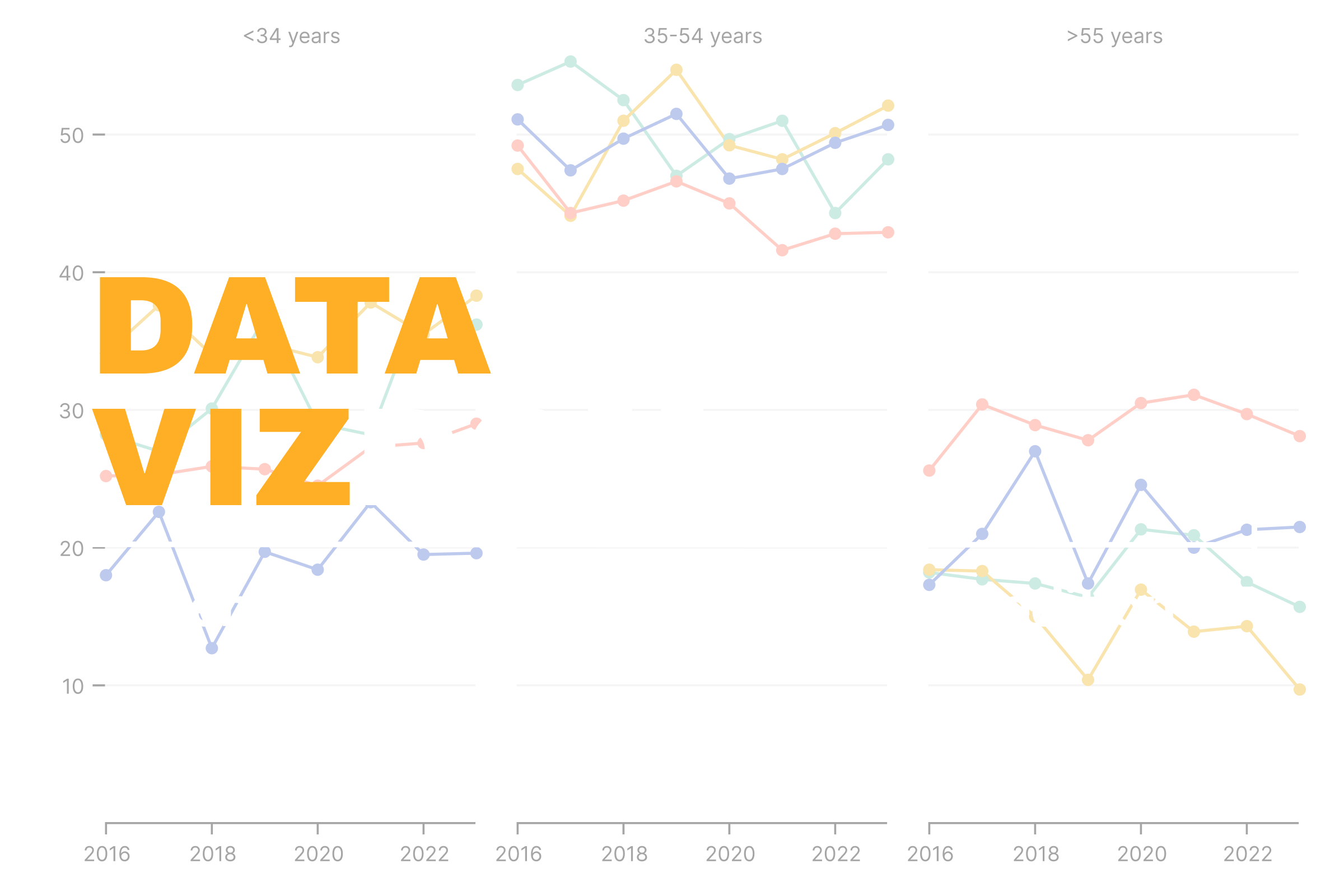Canada’s transportation and warehousing sector forms the backbone of the supply chains that move goods across the country and into international markets. In 2024, the industry employed about 944,000 people in full-time positions. Compared to 2016, that is roughly 150,000 more workers, a growth of nearly 19% over eight years.
How these workers are distributed across age groups, regions, and transportation modes affects the sector’s productivity and resilience. Differences in the use of technology and wages, for example, influences both workforce composition and the opportunities available to new entrants. Ensuring the sector remains attractive to younger workers will be critical to maintaining a trained and capable workforce for the future.
To explore how these dynamics have played out, the interactive chart below shows the age distribution of the workforce across the main freight transportation modes from 2016 to 2023.
The first insight is that the proportion of workers aged 35 to 54 is relatively similar across modes, making this the most consistent age category. In 2023, water and rail each had just over 50% of their workforce in this age group, while air was slightly lower at 48% and truck at 43%, the lowest among the four modes. Both truck and air have experienced downward trends since 2016, with air declining from 54% to 48% and truck from 49% to 43%.
The proportion of younger workers has increased across all four modes since 2016, though year-to-year variation is high for air and water (data for those under 24 are suppressed for water). Rail and air have the highest shares of young workers at 38% and 36%, respectively, while truck is lower at 29% but has steadily risen from 25% in 2016.
Finally, workers older than 55 show a relatively flat trend in trucking, which has the highest share among the four modes at 28%. Water is second, even without data for those over 65. Air and rail have seen declines since 2016, falling from 18% for both to 16% and 10%, respectively, in 2023.
These trends show a workforce that is growing and gradually getting younger, but with significant variation across modes. Maintaining a trained and capable workforce will depend on attracting new entrants and supporting ongoing training, especially in modes where older workers remain a large share. Understanding these age patterns can help the sector plan for both current productivity and future resilience.
Data Vizdom digs into ideas big and small through visualizations that help make sense of a changing world, drawing on data from the SLGL dataHub.
